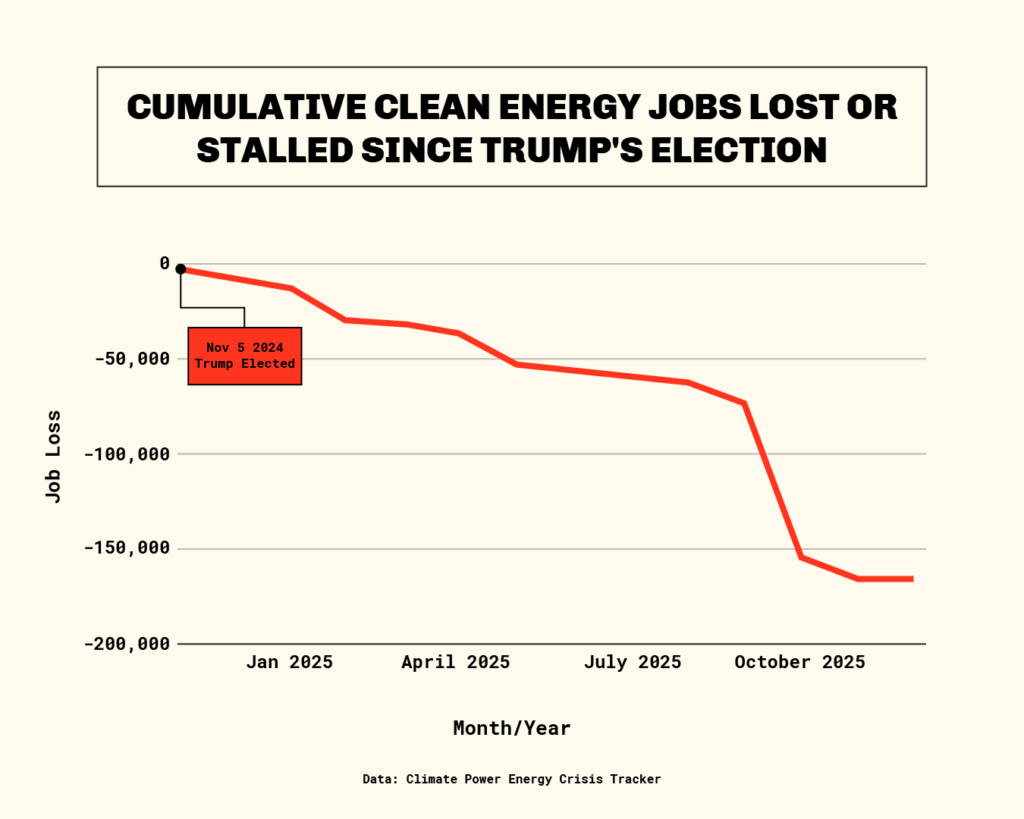Trump’s Energy Crisis
Household electric bills are up 13% nationally since Trump took office, and are poised to spike even further. In July 2025, the Trump administration and congressional Republicans passed the GOP budget bill. This bill is raising utility costs and destroying jobs by removing cheaper, cleaner energy sources from the grid, while funding new tax breaks for the oil and gas industries.
Donald Trump and Republicans are accelerating their self-inflicted energy crisis with continued project cancellations, sending utility costs through the roof, closing down factories, and making us more dependent on foreign oil, all while dramatically increasing the pollution of our air and water.
Learn more about Trump's energy crisis
THe JOBS Numbers
-
165,531
jobslost or delayed
-
$53.05
BILLIONlost or delayed private investment
-
324
PROJECTScanceled, delayed, or laying off staff
THe ENERGY Numbers
-
24,958
MEGAWATTSlost energy capacity
-
13.17
MILLIONhomes that could be powered by lost energy capacity
-
4,014
Data Centersdriving up energy demand

Energy Crisis Tracker
Source: Climate Power
10 STATES WITH THE MOST CLEAN ENERGY JOBS LOST
| State | # OF PROJECTS | JOBS LOST OR THREATENED | INVESTMENTS LOST OR THREATENED |
|---|---|---|---|
| TEXAS | 26 | 52,258 JOBS | $6,776,300,000 |
| MASSACHUSETTS | 17 | 16,748 JOBS | $8,608,600,000 |
| ARIZONA | 6 | 8,058 JOBS | $2,026,200,000 |
| NEW JERSEY | 5 | 8,019 JOBS | $2,696,000,000 |
| MICHIGAN | 20 | 7,615 JOBS | $1,022,900,600 |
| NEW YORK | 24 | 6,381 JOBS | $2,544,122,000 |
| SOUTH CAROLINA | 8 | 5,220 JOBS | $3,600,900,000 |
| GEORGIA | 7 | 3,732 JOBS | $4,439,600,000 |
| OHIO | 9 | 3,268 JOBS | $241,900,000 |
| ILLINOIS | 7 | 3,084 JOBS | $3,048,300,000 |
-
Read the full report
Trump’s Grant Terminations
Since the government shutdown began in October 2025, Trump’s Department of Energy has accelerated project cancellations, canceling or threatening to cancel 648 grants supporting clean energy and emission reductions in 47 states. Combined, these grants represented nearly $24 billion in total obligated funding and were expected to support 338,150 new jobs across sectors, including non-profits, universities, state and local governments, and the private sector.